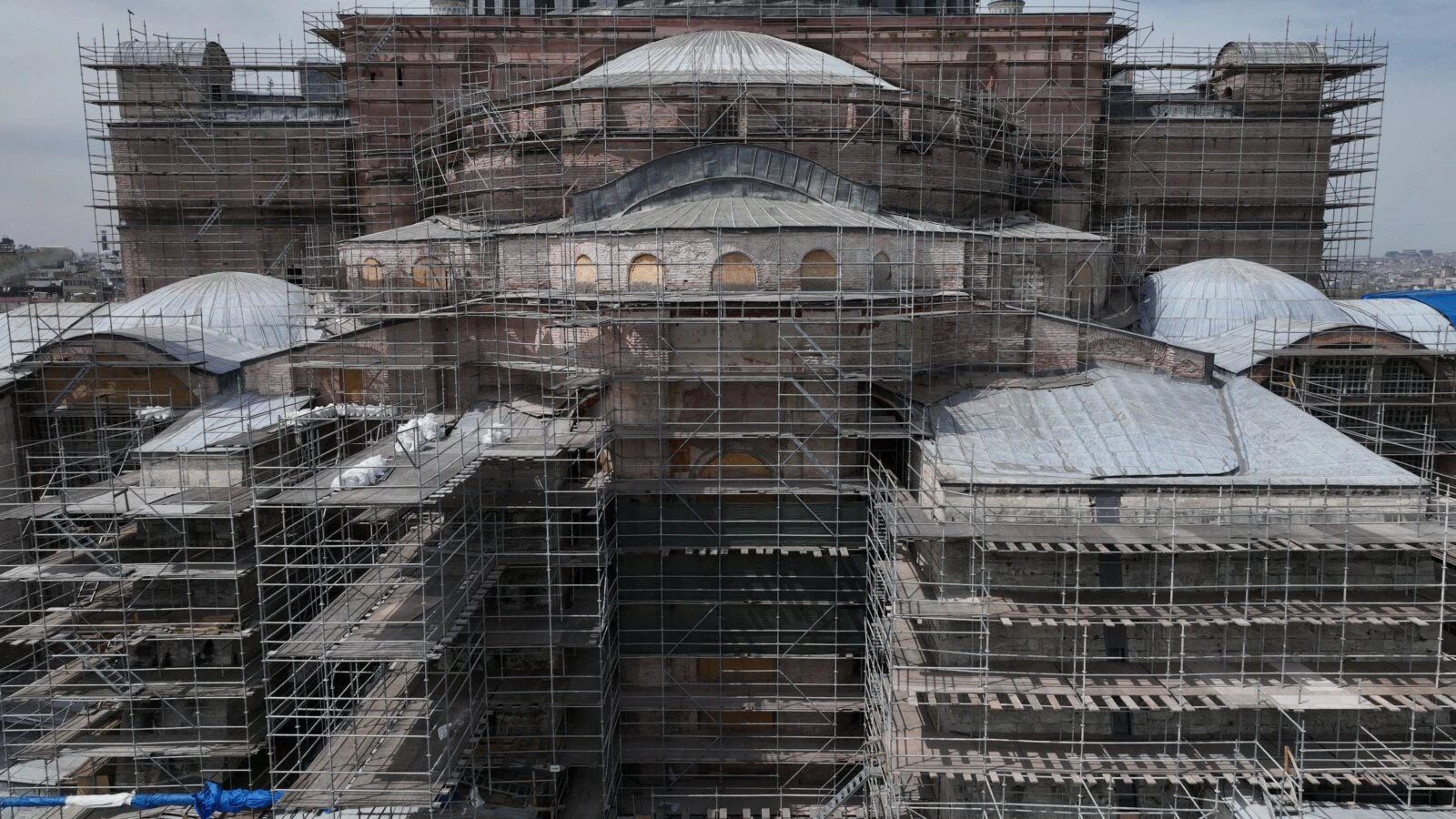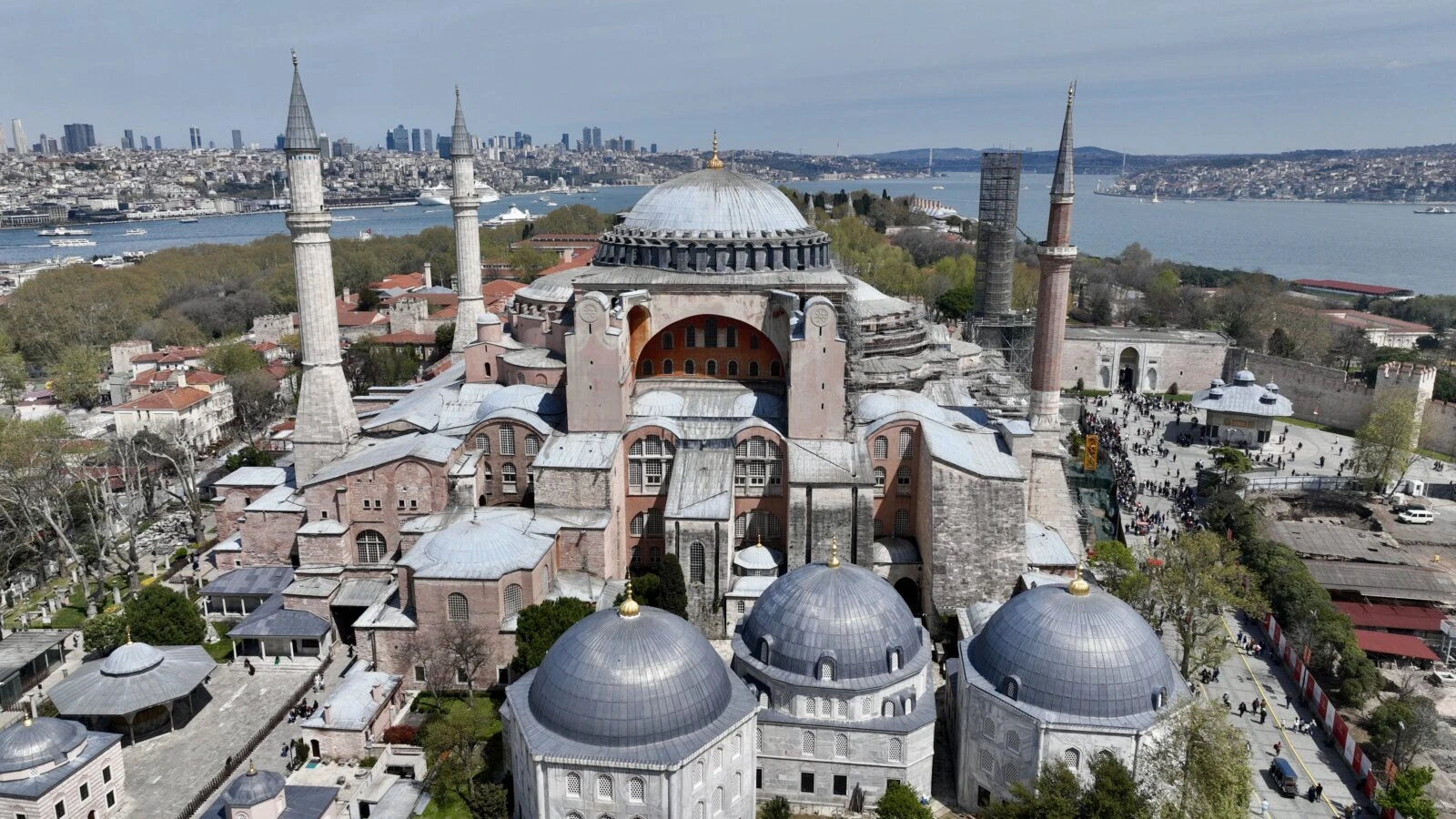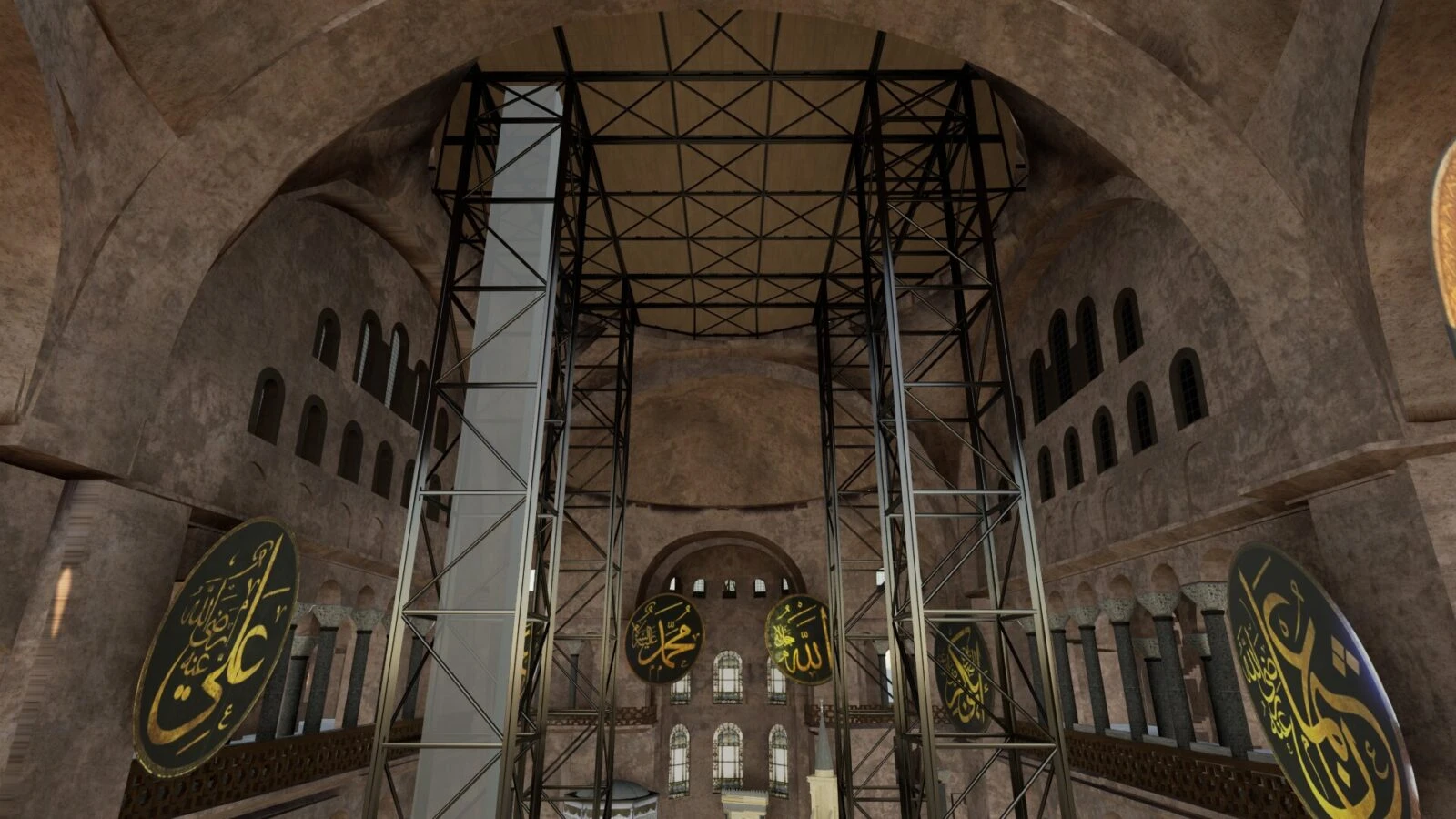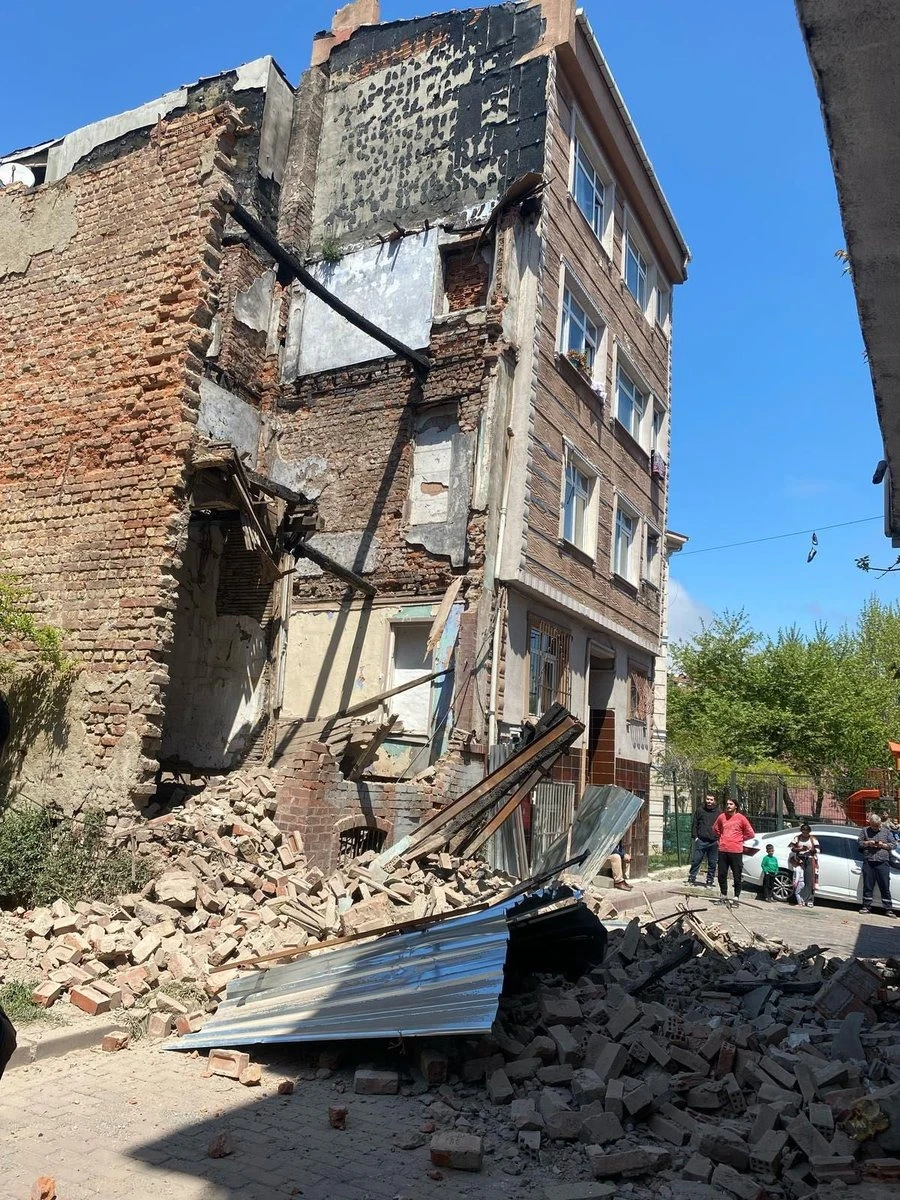How Hagia Sophia withstood latest Istanbul quake while modern buildings suffered damage
 A view of the 1486-year-old Hagia Sophia Grand Mosque, undergoing the largest and most comprehensive restoration process in history, in Istanbul, Türkiye, April 14, 2025. (AA Photo)
A view of the 1486-year-old Hagia Sophia Grand Mosque, undergoing the largest and most comprehensive restoration process in history, in Istanbul, Türkiye, April 14, 2025. (AA Photo)
As a powerful 6.2 magnitude earthquake shook the Sea of Marmara on April 23, Istanbul was once again reminded of its vulnerability. While hundreds of modern structures sustained damage, one 1,486-year-old monument stood firm—Hagia Sophia Grand Mosque.
Istanbul shaken, Hagia Sophia steady
The tremors injured 236 people and damaged 378 buildings in the city. Yet, early assessments revealed that Hagia Sophia, built in the sixth century, remained unscathed, prompting renewed admiration for its remarkable resilience.
Soon after the earthquake, a large-scale restoration project already underway at Hagia Sophia drew attention. The efforts aim to strengthen the iconic structure against the very threat that Istanbul fears most: a major seismic event.

Centuries-old resilience outshines new construction
Initial assessments following the quake revealed that the Byzantine-era masterpiece, Hagia Sophia, sustained no damage—raising the question: How can centuries-old structures endure earthquakes while many modern buildings do not?
The answer lies in both the materials and ancient engineering wisdom embedded within the monument’s walls.

A special mortar that absorbs seismic energy
Since 2010, a team of experts from the National Technical University of Athens, Princeton University, and Bogazici University has been studying the materials and structural integrity of Hagia Sophia. Professor Antonia Moropoulou, leading the Greek research team, explained that the special mortar used during the construction acts like a shock absorber.
“The mortar used in Hagia Sophia has a semi-crystallized structure that absorbs the energy released during an earthquake,” said Moropoulou. “Before the 1999 earthquake, we were already confident that this monument, with its structural features and composition, could withstand a magnitude 7 earthquake.”
She explained that the bricks used in the main dome are 97% similar to those used in ancient Rhodes, showcasing a fusion of Anatolian, Byzantine, and early Greek construction technologies. These bricks are not only highly stress-resistant but also twelve times lighter than ordinary bricks, reducing the load on the structure.

Hidden angels and the wisdom of architect Sinan
Hagia Sophia’s ongoing restoration efforts have also uncovered historical features. During previous restorations, plaster applied by 19th-century Swiss architect Fossati had covered ancient mosaics. The removal of this deteriorating plaster not only reduced structural stress but also revealed lost artworks—most notably, an angel depicted within the dome.
The monument has undergone three major reconstructions in its history, with the current structure built between 532 and 537 under Emperor Justinian I after the destruction of a previous version during the Nika Revolt.
In the 16th century, the Ottoman chief architect Sinan (Mimar Sinan)—regarded as one of the world’s first earthquake engineers—fortified the structure with external buttresses during the reign of Sultan Selim II. These additions have played a crucial role in Hagia Sophia’s long-standing stability.

Preparing for Istanbul’s long-feared megaquake
With experts warning of an impending major earthquake in Istanbul, new restorations are underway to reinforce the building further. Mehmet Selim Okten, a construction engineer and academic at Mimar Sinan University, said this is the most extensive structural intervention on Hagia Sophia in more than 150 years.
“We are now focusing on the seismic safety of Hagia Sophia, especially in light of the expected Istanbul earthquake,” Okten stated.

Monitoring the dome, quake by quake
According to a study by Bogazici University researchers Eser Cakti and Emrullah Dar, Hagia Sophia has been monitored with a structural health monitoring system since 1991. The system was upgraded in 2008 and has since recorded over 100 seismic events.
Their findings revealed slight angular displacements in the main dome, suggesting that the arches and dome shift minutely relative to the main piers during tremors.

Will it survive another big one?
According to Emeritus Professor Mustafa Erdik, an earthquake engineering expert, Hagia Sophia’s structural integrity largely relies on its four main piers, secondary piers, and main arches supporting the central and semi-domes.
He noted that in a hypothetical magnitude 7 earthquake occurring 20 kilometers south of Hagia Sophia, the east and west semi-domes could detach from the main arches, causing localized damage to the central dome.



